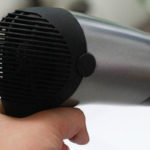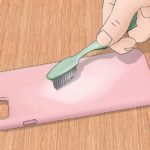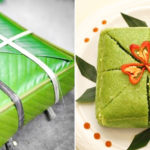Is pouring boiling water down a clogged drain a good idea?
Whether or not you should pour hot water down a clogged drain depends on the type of pipe installed underneath your home’s drainage system, or more specifically, the material of the piping.
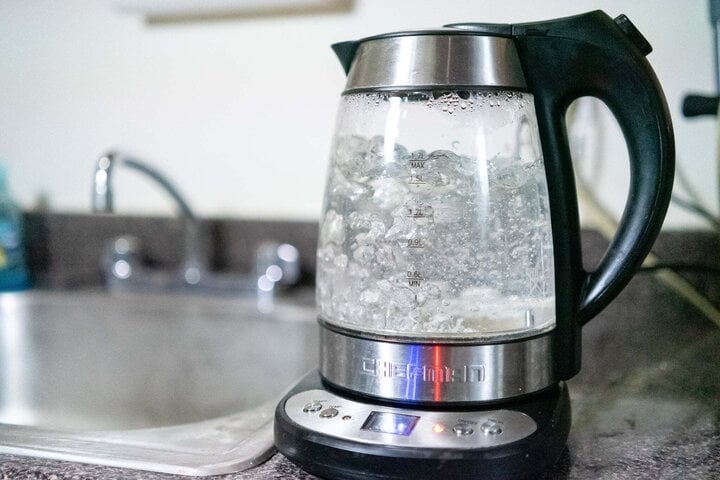
Should you pour hot water down a clogged drain? Here’s how to find out (Image: The New York Times)
While copper, iron, and galvanized steel pipes can withstand high water temperatures, materials such as PVC, PEX, and CPVC can eventually become damaged when exposed to heat. Since most household drainage systems are now installed with PVC piping, professional plumbers generally advise against pouring boiling water down a clogged drain.
PVC pipes can withstand temperatures ranging from 55 to 75 degrees Celsius but cannot tolerate water as hot as 100 degrees Celsius. Pouring boiling water directly down the drain can soften or melt the joints of the piping (which are usually glued together). Over time, the drainpipes can deteriorate and start leaking, creating more problems such as the need for repairs or replacements.
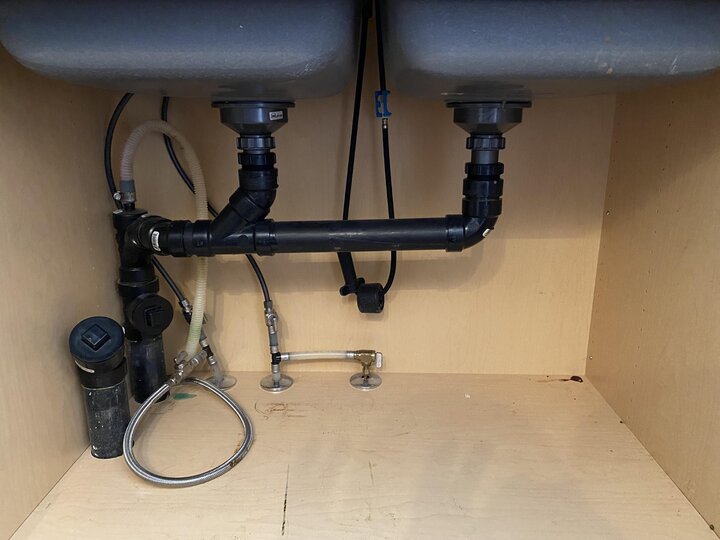
Pouring boiling water directly down a drain made of plastic can soften or melt the joints of the piping. (Image: Reddit)
Furthermore, pouring hot water down a clogged drain is not a long-term solution to the problem. It will only cause grease, hair, and debris to move further down the line, making it harder to access and remove. As a result, a clogged drain that is regularly doused with hot water can lead to more severe clogs down the road. To clear these clogs, you may eventually pour so much boiling water down the drain that it cracks, breaks, or otherwise damages the piping.
However, if your household drain is only slightly clogged, you can try using hot water as a way to clear it. This is best done by using moderately hot water (no hotter than 70 degrees Celsius) in combination with drain cleaner, baking soda, or vinegar.
If your drain is frequently getting clogged, it is best to investigate the underlying cause so that you can find the most optimal solution. Some DIY methods that you might want to try include using a plunger or drain snake. Only pour boiling water down the drain if your pipes are made of metal such as iron or copper, as these can withstand the highest temperatures.
For really tough clogs, it is best to contact a professional plumber to take care of the problem.
Simple DIY drain cleaning tips
If your household drains are only slightly clogged, one of the following solutions may be the answer.
Baking soda, vinegar, and hot water
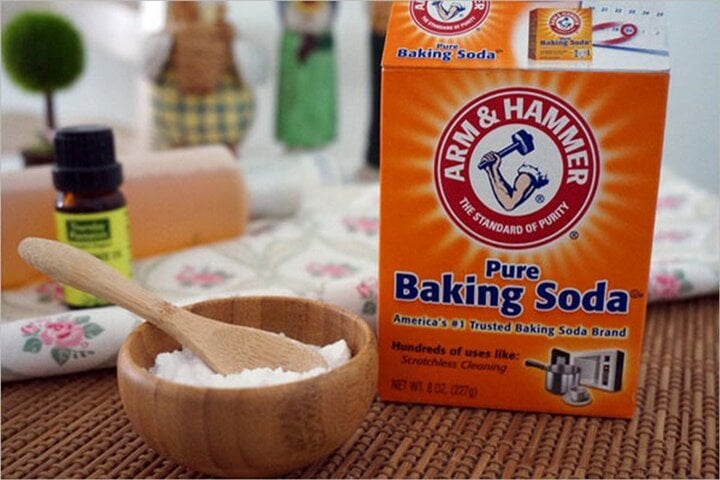
Using baking soda is one of many ways to clear a clogged drain at home. (Image: Southern Living)
Using baking soda is one of the most popular DIY drain cleaning methods. However, to make it most effective, you should combine it with other agents such as vinegar and hot water to speed up the breakdown of organic matter and promote faster drainage.
All you need is 1 liter of white vinegar, 2 liters of water, and 0.3 kg of baking soda. Here are the steps:
– Bring 2 liters of water to a boil in a pot.
– Gradually add the vinegar and baking soda to the boiling water. Note that when adding the baking soda, you should add it a little at a time to avoid overflow.
– Once all of the baking soda has been added to the pot, bring the solution back to a boil and then remove it from the heat. Pour the entire solution into the clogged drain, leave it sit for about 15 minutes, and then flush with clean water. The chemical reaction between the baking soda and vinegar at high temperatures will quickly soften grease, food residue, and other debris and wash it away with the water.
Salt and baking soda
Mix salt and baking soda in a 1:1 ratio and pour it directly into the drain. Then, pour some hot water down the drain. The chemical reactions of the salt, baking soda, and hot water will help to break down any stubborn waste that is clogging the drain.
With this method, you will need to wait 4 to 5 hours for the mixture to take effect. During this time, do not run any water down the drain. It is best to pour this drain cleaning solution down the drain at night before going to bed and let it sit overnight.
Clothes hanger
You can create your own drain cleaning tool by straightening out a wire coat hanger and bending one end into a hook shape. Then, insert the hanger into the drain and use the hook to grab and pull out any debris that is causing the clog.
To ensure proper hygiene, you should wear gloves and use a bag to remove debris from the drain.
Microorganism-based products
There are now many highly effective microorganism-based drain cleaners on the market. When these microorganisms enter the drainpipe, they break down the waste that is causing the clog, especially stubborn residue such as grease and food scraps. Be sure to mix and use these products according to the manufacturer’s instructions for best and fastest results.
Plunger
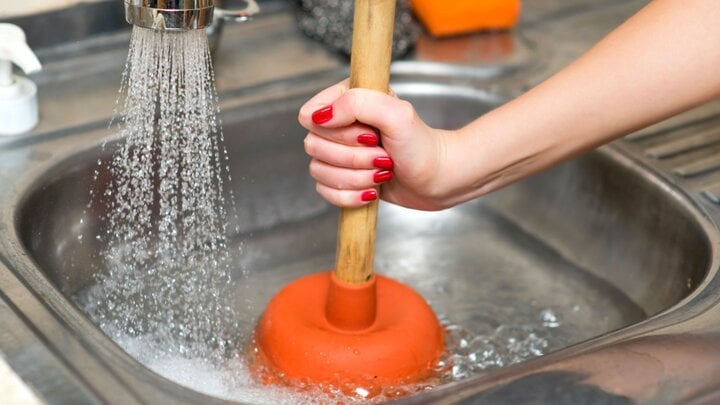
Using a rubber plunger is an effective way to clear minor clogs at home. (Image: Gold Coast Plumbing Company)
Carefully place the plunger over the drain and then pump up and down repeatedly. The repeated force and suction of the plunger will quickly loosen and flush away any waste that is stuck inside the drainpipe.
Drain snake
With a dedicated drain cleaning tool featuring a hooked end, simply insert the hook into the drain and carefully pull out any debris. Use the tool’s handle to rotate the hook around the inside of the pipe and dislodge any waste that is causing the clog.
This method is suitable for clogs caused by hair, food scraps, and personal hygiene products.
Drain cleaner
There are many different drain cleaners on the market. When selecting a product, be sure to purchase one from a reputable manufacturer to ensure quality and safety, and read the label carefully before use. When using drain cleaner, wear a mask, gloves, and goggles to protect your skin and eyes from the chemicals. Only pour the amount of cleaner down the drain that is specified on the packaging. Do not use too much, as this can damage the surface of the drainpipe.
According to VTC
PVC pipes can withstand temperatures between 55 and 75 degrees Celsius, but water at 100 degrees Celsius is too hot and can soften or melt the joints of the pipes. This can lead to leaks and further problems.
If your drain is only slightly clogged and your pipes are made of metal such as iron or copper, you can try using moderately hot water (no hotter than 70 degrees Celsius) along with a drain cleaner, baking soda, or vinegar to clear the blockage.
You can try using a plunger or a drain snake to clear the blockage. Other methods include using baking soda and vinegar, salt and baking soda, or microorganism-based products. For tough clogs, it’s best to contact a professional plumber.


























